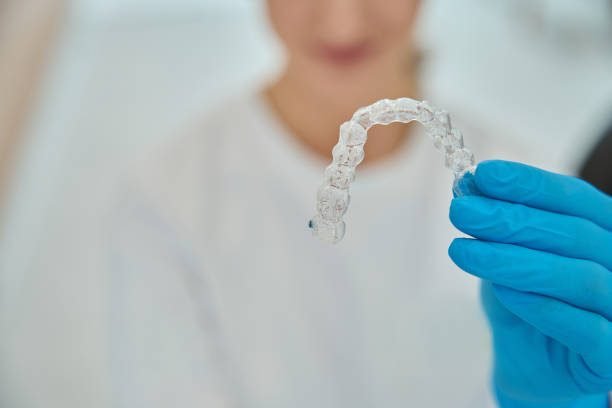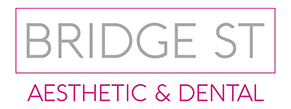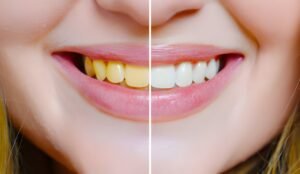A innovative. an orthodontic procedure called Invisalign has become well-known for its discrete, pleasant, and efficient teeth-straightening methods. “How long does Invisalign take?” is probably one of your top concerns if you’re thinking about getting Invisalign. We’ll answer this question and give you all the details you require regarding the length of Invisalign treatment in our in-depth guide.
Understanding Invisalign
A clear aligner device called Invisalign is intended to progressively reposition your teeth. For people who want a more covert orthodontic treatment, Invisalign aligners are a popular option because they are nearly invisible, in contrast to traditional braces with wires and brackets. Because the aligners may be taken out, you are free to eat all of your favourite meals.

Treatment Time with Invisalign
A number of variables can affect how long Invisalign treatment takes. The average duration of an Invisalign treatment is several months to a little over a year. Let’s examine the variables that affect how long your trip with Invisalign could take:
1. Your Case’s Complexity
The length of your Invisalign treatment depends in large part on how complicated your orthodontic problems are. Treatment for minor misalignments or spacing problems could be finished in as little as six months. On the other hand, more complicated cases—like extreme crowding or widespread misalignment—might require up to 18 months or even longer to get the desired outcomes.
2. Consistent Wear of Aligners
Wearing your aligners on a regular basis is vital to getting the finest and quickest outcomes from Invisalign. Wearing them for 20–22 hours a day is the goal; you should take them off for dental hygiene, eating, and drinking (apart from water). It is more likely that your therapy will go more smoothly and fast if you attentively follow our recommendation.
3. Regular Check-ups
You will need to schedule routine checkups with your dentist or orthodontist every four to six weeks while using Invisalign. During these visits, your orthodontist can keep an eye on your development and modify your treatment plan as needed. Frequent examinations guarantee that your teeth are progressing according to schedule, which helps to shorten the duration of your treatment.
4. Treatment Plan Customisation
The Invisalign procedure is quite customised. For you, your orthodontist will design a computerised treatment plan that meets your specific requirements and objectives. Your treatment goals and the complexity of your case will dictate how many aligner trays you need and in what order in your treatment strategy.
5. Patient Compliance
For your Invisalign treatment to be successful, you must cooperate with your orthodontist and follow their instructions. You stand a better chance of achieving your desired outcomes within the allotted time frame if you wear your aligners as prescribed by your orthodontist and adhere to their recommendations on a regular basis.
6. Age and Tooth Movement
Contrary to popular belief, the length of Invisalign treatment isn’t always significantly influenced by age. The most important thing to think about is how your teeth move. While some people’s teeth move more quickly than others, others might need a little more time. To obtain a precise treatment time estimate, your orthodontist will evaluate your particular case.
7. Aligner Changes
A series of aligners are used in the Invisalign treatment, each of which gradually moves your teeth toward their final positions. Treatment duration may vary depending on how frequently aligners are changed. Weekly aligner changes may be necessary in certain circumstances, while biweekly intervals may be necessary in others. The timetable that works best for you will be decided by your orthodontist.
8. Compliance with Oral Hygiene
It’s crucial to practise good oral hygiene when receiving Invisalign treatment. Delays and difficulties may arise if your teeth and aligners are not properly cleaned. Following your orthodontist’s instructions for dental hygiene on a regular basis can increase your chances of getting the desired outcomes in the anticipated amount of time.
9. Severity of Misalignment
How severe your dental misalignment is will determine how long your treatment will take. For a variety of circumstances, Invisalign is quite successful; however, correction of really complicated disorders may take longer. Your orthodontist will assess how much of a misalignment you have and create a treatment plan that addresses it.
10. Interproximal Reduction (IPR)
To provide room for tooth movement, a dental operation known as Interproximal Reduction (IPR) may be required in some circumstances. There is very little enamel loss in between teeth throughout this process. The length of treatment may vary slightly based on the degree of IPR necessary.
11. Mid-course Corrections
If the first course of treatment doesn’t produce the desired results for your teeth, you may occasionally need mid-course adjustments. Although these modifications could lengthen the course of treatment, they are necessary to guarantee the greatest outcomes.
12. Retainers and Post-Treatment Care
You might need to wear retainers to keep your teeth straightened after your Invisalign treatment is finished. Your orthodontist’s recommendations will determine the kind and length of retainers that are utilised. To keep your benefits intact, you must take proper care of yourself after therapy.
Conclusion
Compared to traditional braces, Invisalign offers several benefits, including faster treatment timeframes. It is a flexible and efficient orthodontic option. The length of an Invisalign treatment might vary based on a number of factors, but it usually lasts anywhere from a few months to slightly over a year. It is imperative that you wear your aligners regularly, go to check-ups on a regular basis, and adhere to your orthodontist’s instructions in order to have a successful and timely outcome.
Speak with an experienced Invisalign provider if you’re thinking about using Invisalign for your orthodontic treatment. They will evaluate your particular situation, create a customised treatment plan for you, and offer you with a more precise timeframe for the Invisalign process.
Purchasing Invisalign is an investment in a more self-assured, straighter smile. You may quickly reach your smiling goals if you have the correct mindset and level of dedication.
Frequently Asked Questions (FAQs)
Can Invisalign be used to fix a single crooked tooth?
Although Invisalign is frequently linked to full-mouth procedures, it can also be used to treat more focused problems, such as a single misaligned tooth. Your orthodontist can determine if Invisalign is appropriate in certain situations.
Is it possible to speed up Invisalign treatment?
Some patients may be curious about quickening their Invisalign experience. Although the length of treatment is usually optimal, your orthodontist can talk about any methods for expediting the process.
Can Invisalign correct bite problems like overjet or crossbite?
Although the page discusses common concerns, more information may be required regarding specific bite abnormalities like overjet (protruding upper teeth) or crossbite (misalignment of upper and lower teeth).
What happens if I lose or damage an aligner tray during treatment?
Accidents may occur, and aligners could get broken or misplaced. Patients might be curious about the protocol in these cases and how it impacts the course of their treatment.
Can I change from traditional braces to Invisalign in the middle of my treatment?
For a more covert option, some people may begin with traditional braces and then think about upgrading to Invisalign. It’s critical to comprehend the viability of and prospective modifications to such a shift.
Does Invisalign treatment have any age restrictions?
Although the article acknowledges in passing that age isn’t a deciding factor, it can be helpful to address any age-related problems, such as suitability for teenagers or older persons.
For more information Click here……






